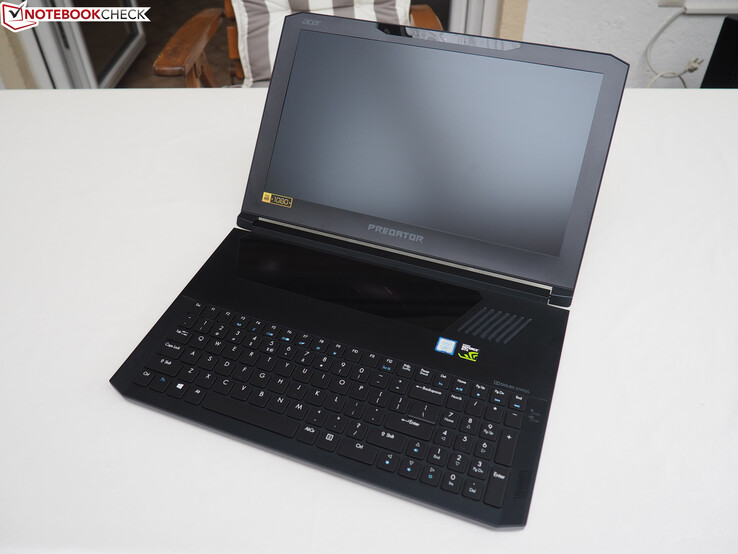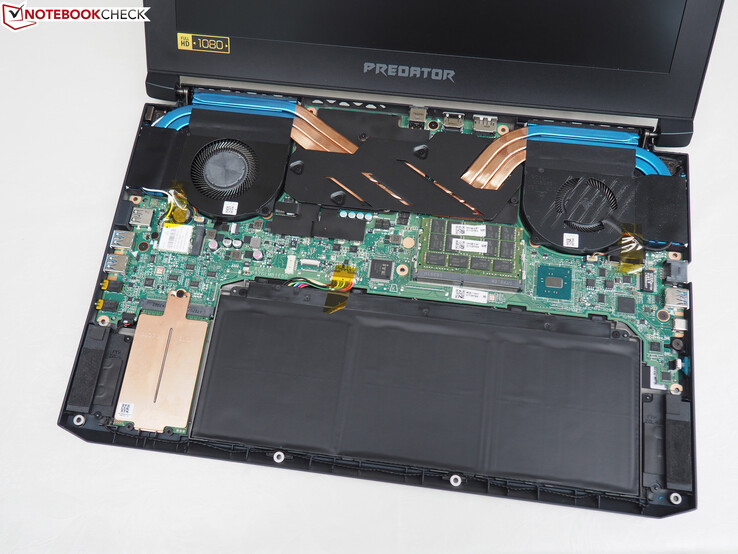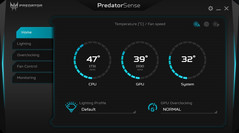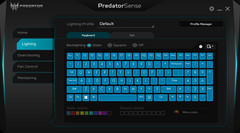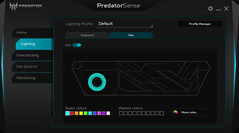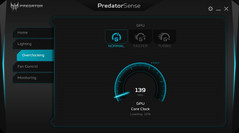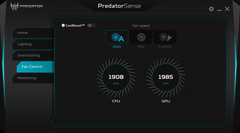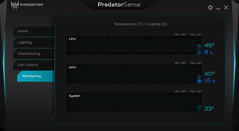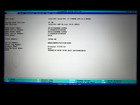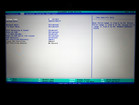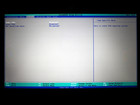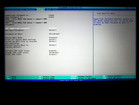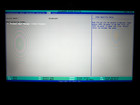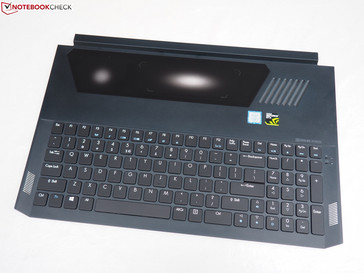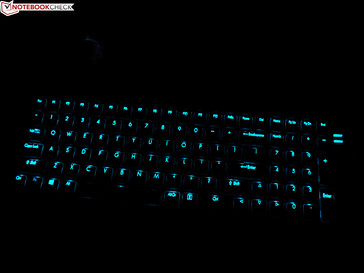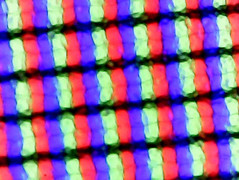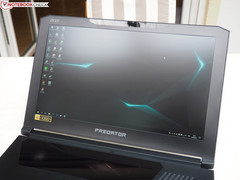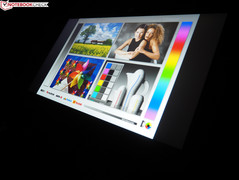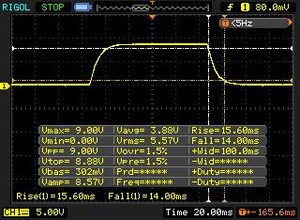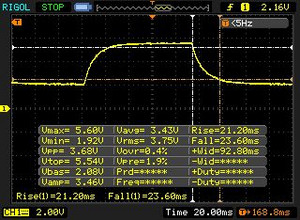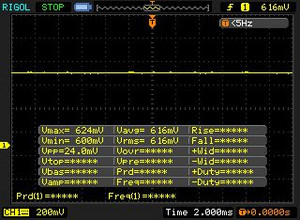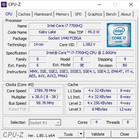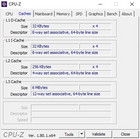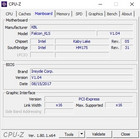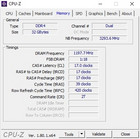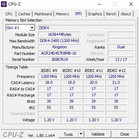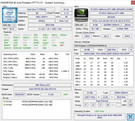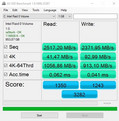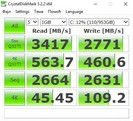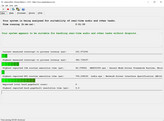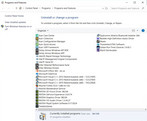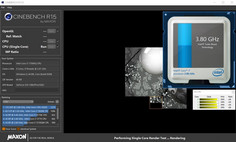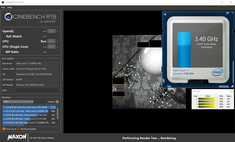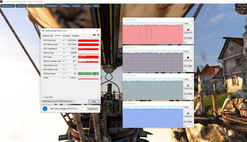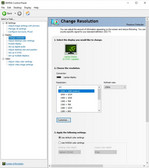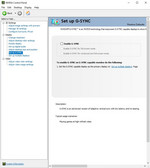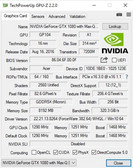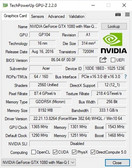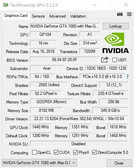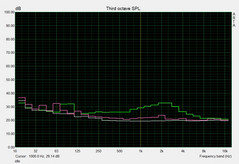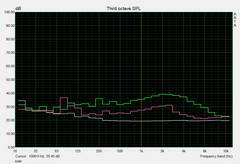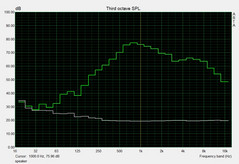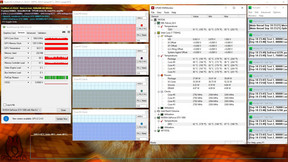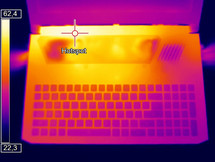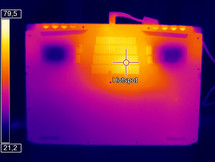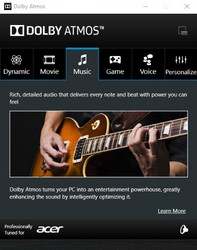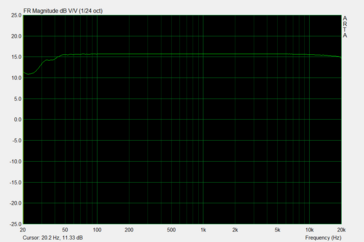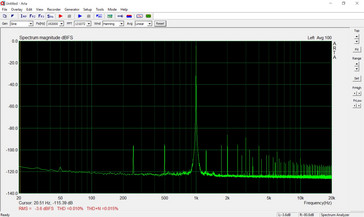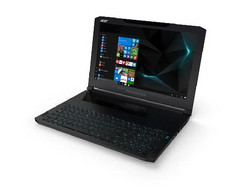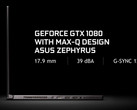Acer Predator Triton 700 (i7-7700HQ, GTX 1080 Max-Q, Full-HD) Laptop Review

Acer had primarily focussed on office and multimedia notebooks but recently, the Taiwanese manufacturer has started working on products suitable for gaming, as well. Their first gaming laptops, the Aspire V15/V17 Nitro Black Edition (recently upgraded to a GeForce GTX 1060) targeted at the lower high-end segment, received a heart-warming welcome from the tech community thanks to their very attractive value-for-money ratio.
Gaming enthusiasts might have eyeballed with Acer´s Predator series that offers fewer compromises concerning gaming resolution and quality settings, but it also comes with a heavy and questionably designed case. The Predator 15, Predator 17 and Predator 17 X are equipped with Nvidia’s high-end consumer graphics solutions (either GeForce GTX 1070 or GTX 1080). Just recently, they had a new addition to the family by the name of Helios 300, a device that tries to satisfy too many demands at once. It was meant to be attractive in terms of pricing, visuals and gaming performance and managed to be merely an okay device.
For frequently travelling customers, who appreciate performance as well as good build quality, Acer´s new and auspicious Triton 700 might be an interesting option. As of writing this review, the Triton 700 is not yet listed on popular marketplaces in the US. On Acer´s homepage, there is one model available for the hefty price of $2999.99 (model name: PT715-51-732Q). It comes with an Intel Core i7-7700HQ, an Nvidia GeForce GTX 1080 Max-Q with 8 GB of memory, 32 GB RAM, a 512 GB SSD drive and a Full HD screen with G-Sync. In Germany, Acer offers several models with different hardware specs.
The currently available top-end iteration, the NH.Q2LEV.001 for a price of 3499 Euros (~ $4109) comes with 16 GB of RAM a 512 GB SSD-RAID configuration and the earlier mentioned GTX 1080 Max-Q. Our test device from the US (which is curiously not yet listed on Acer´s website) even has 32 GB of RAM and 1 TB of storage. In any case, the different versions are equipped with an Intel Kaby Lake Core i7-7700HQ, a matte, 120-Hz display with G-Sync support for a smoother image.
The Triton 700 has some competition. In this review, we will compare it against the slim MSI GS63VR, the Eurocom Q5, the Aorus X5 v7 and – the most obvious opponent – the Asus ROG Zephyrus GX501.
Case
After criticizing the design of the Predator 15 and Predator 17, we are happy to find more subtle looks on the Triton 700. We would even go as far as crowning it the most beautiful gaming notebook on the market – even above the ROG Zephyrus.
The case has a pleasing design from top to bottom that comprises classic and modern aspects, e.g. the blue outline of the Predator logo on the lid or the triangular fan exhausts with blue colored cooling blades. We most definitely welcome the absence of red elements that are stereotypical for gaming notebooks and value the understatement of the entire concept.
The area above the anti-ghosting keyboard is visually prominent due to the shiny Gorilla Glass surface that accommodates the touchpad and allows us to peek into the interior where we can see the left cooling fan. The fan on the right can be seen through a grid in the case. The asymmetric design is due to the cooling system.
The build quality of the case is very impressive. The lid and the top of the Triton 700 are made of aluminium. And although, the (relatively thick) bezels of the display are made of plastic, we subjectively perceive a full aluminium body. 95% of the surfaces blend seamlessly into each other, but it is not perfect, since some elements like the transition between lid and logo are a little too sharp-edged, leaving some space for dust and dirt to collect.
The hinges allow for opening the notebook one-handedly and are well built. The base is very rigid, despite its thinness, and cannot be bent even with relatively strong force. Only the lid should have been built sturdier as is the case with most notebooks. In conclusion, Acer has done an exemplary job with the case.
The 2.4 kg (5.3 lbs) light 15-inch device would allow for some on-the-go gaming if the limited battery capacity was not bottlenecking the fun (more on that later). The Aorus X5 v7 (2.6 kg/~5.7 lbs), the MSI GS63VR (1.9 kg/~3.2 lbs), the Asus GX501 (2.3 kg/~5.1 lbs), and the Eurocom Q5(2.2 kg/~4.9 lbs) weigh more or less the same with some minor differences.
Regarding the height, the Triton 700 with its 18.9 mm (0.74 inches) lies in between its rivals, which are situated from 17.9 mm (0.70 inches) for the GX501 up to 23 mm (0.91 inches) for the X5 v7.
Equipment
Port selection
The number of ports lives up to the high-end aspirations. The only flaw may be their unfortunate position in the middle of the left and right sides of the device because of the ventilation system that exhausts to the sides and to the back. Hence, the plugs and cables of peripherals might disturb the use of a mouse. There are four USB Type A ports, three of them are USB 3.0, one is USB 2.0, two 3.5 mm jacks for headsets and microphones, one RJ45 port, and one opening for a Kensington Lock.
The biggest highlight is the Thunderbolt 3 Type C port and its support for USB 3.1 Gen2 and DisplayPort. In combination with the HDMI 2.0 port (4K @ 60 Hz) and the normal-sized DisplayPort, both of which are located on the back, users can output the video signal to up to three external monitors simultaneously. We are not happy about the absence of a card reader in both, the Triton 700 and the ROG Zephyrus.
Communication
For data transfer, Acer relies on gaming-optimized products by Killer. Wired connections via Gigabit E2500 and wireless connections via the Wi-Fi 1535 adapter with support for 802.11 a/b/g/n/ac and Bluetooth 4.1 are possible.
At 1 meter (~3.28 ft) distance to our reference router (Linksys EA8500), transmission rates of 551 Mbit/s position the Triton 700 just slightly behind the MSI GS63VR. With 682 Mbit/s (receive) it comes in second behind the Asus Zephyrus GX501.
| Networking | |
| iperf3 transmit AX12 | |
| MSI GS63VR 7RF-228US | |
| Acer Predator Triton 700 | |
| Aorus X5 v7 | |
| Eurocom Q5 | |
| Asus Zephyrus GX501 | |
| iperf3 receive AX12 | |
| Asus Zephyrus GX501 | |
| Acer Predator Triton 700 | |
| Eurocom Q5 | |
| MSI GS63VR 7RF-228US | |
| Aorus X5 v7 | |
Accessories
As with most notebooks, the Triton 700 does not come with many accessories. The box includes a quick start guide and a warranty booklet. There is no USB flash drive that might contain recovery of driver software. The included 230V power adapter has dimensions of 18 x 9 x 3.5 cm (~7.08 x ~3.54 x ~1.38 in).
Maintenance
The Triton 700 can be opened after loosening 13 screws and can be better serviced and upgraded than the ROG Zephyrus that has only 4 screws. Neither of them has a maintenance flap. After removal of the GX501´s base plate, only a part of the fan becomes visible. On the other hand, after opening the Triton 700 from the top (a rare sight for notebooks), the entire interior is exposed. The motherboard is attached to the bottom.
There are two DDR4 SO-DIMM RAM slots, two passively cooled M.2 2280 slots, the Wi-Fi card, and the 3-cell battery. The cooling system consists of two AeroBlade 3D fans and five heatpipes. The GPU and the CPU are soldered onto the motherboard and cannot be upgraded. Storage devices, working memory and wireless card can be exchanged.
Software
The tuning software PredatorSense has received some welcomed improvements and is finally presentable to its competitors. Its UI is clearer than MSI´s Dragon Center or Asus´s Gaming Center and can be used even by tuning beginners. The home tab gives a general overview, while users can control the color of the keyboard and the left fan in the Lighting tab. There are a number of lighting modes available for the keyboard.
The overclocking menu that allows for a two-step GPU overclock (Faster & Turbo) or the fan controls is equally exciting. In our tests, we set the OC mode to normal and the fan control to auto. The software features of Triton 700´s PredatorSense are topped off with a hardware surveillance that visualizes CPU and GPU utilizations and temperatures.
BIOS
Warranty
Acer omits to specify its warranty services, but a standard warranty can be assumed. Please see our Guarantees, Return Policies & Warranties FAQ for country-specific information.
Input devices
Keyboard
The mechanical keyboard in the Triton 700 is placed on the front part of the base unit and not in the middle as is the case with most other notebooks. The typing experience is not as good as the one by some MSI notebooks (e.g. the GT75VR or the GT83VR) but it is still more advanced than what most competitors can offer.
Inputs are precise with a clear typing feedback in terms of pressure points. The low key travel and flat construction do not make it seem like a mechanical keyboard, at all. Its typical audible typing sounds are, however, an indisputable clue. We were not able to find any weak spots or flaws. The dedicated number pad and normal-sized arrow keys are obviously advantageous. The keyboard of the ZOG Zephyrus suffers from the TrackPad being positioned on the right hand-side next to the keyboard.
Ergonomically, neither of the two notebooks is designed optimally. The missing wrist rest leads to a slightly uncomfortable, angular hand placement – despite its slim form factor. The keyboard labelling could use some retouches. While the main functions are quite visible when actively illuminated by the RGB backlit, secondary Fn-function keys are hard to see due to their soft-blue unlit labels.
Touchpad
The Triton 700 loses a couple of points for its unconventional touchpad. Not only is its position not ergonomical and impractical, its gliding properties are only moderate. Greasy fingers do not glide as well over the glass surface than they would over a plastic surface.
Furthermore, the touchpad is only visually distinguishable from the normal surface by a thin line at the corners. This made it already hard to see during the daylight and is practically invisible during at night. Another issue is posed by the missing buttons for left and right click. Virtually all touchpads without dedicated mouse buttons still have a haptic click function on the bottom. The Triton 700, on the other hand, only recognizes gestures and finger taps. Finding out how to right-click might be an adventure.
We could not be bothered to actually use the irritating and badly positioned touchpad and immediately went for an external mouse.
Display
The display fulfills all the criteria for a modern gaming notebook: Full HD? Check. 120 Hz? Check. G-Sync? Check. Whether it was a bad decision or not to implement an IPS panel instead of a TN panel is up to the individual user. Positive is undoubtedly the stable viewing angle and natural colors, even when looked at from the sides that is characteristic for the IPS-technology.
| |||||||||||||||||||||||||
Brightness Distribution: 84 %
Center on Battery: 291 cd/m²
Contrast: 1323:1 (Black: 0.22 cd/m²)
ΔE ColorChecker Calman: 5.52 | ∀{0.5-29.43 Ø4.78}
ΔE Greyscale Calman: 6.59 | ∀{0.09-98 Ø5}
89% sRGB (Argyll 1.6.3 3D)
58% AdobeRGB 1998 (Argyll 1.6.3 3D)
63.5% AdobeRGB 1998 (Argyll 3D)
88.7% sRGB (Argyll 3D)
62.5% Display P3 (Argyll 3D)
Gamma: 2.44
CCT: 7816 K
| Acer Predator Triton 700 AUO B156HAN04.2 (AUO42ED), 1920x1080, 15.6" | Asus Zephyrus GX501 AUO B156HAN04.2 (AUO42ED), 1920x1080, 15.6" | Eurocom Q5 ID: LGD04D4, Name: LG Philips LP156UD1-SPB1, 3840x2160, 15.6" | Aorus X5 v7 AU Optronics B156ZAN02.3 (AUO23EB), 3840x2160, 15.6" | MSI GS63VR 7RF-228US 3840x2160, 15.6" | |
|---|---|---|---|---|---|
| Display | 4% | 2% | 4% | -21% | |
| Display P3 Coverage (%) | 62.5 | 64.8 4% | 63 1% | 65.3 4% | 48.21 -23% |
| sRGB Coverage (%) | 88.7 | 91.8 3% | 92.7 5% | 91.9 4% | 72.6 -18% |
| AdobeRGB 1998 Coverage (%) | 63.5 | 65.9 4% | 64.4 1% | 66.3 4% | 49.81 -22% |
| Response Times | 15% | 16% | 7% | 29% | |
| Response Time Grey 50% / Grey 80% * (ms) | 44.8 ? | 40.4 ? 10% | 32.4 ? 28% | 44 ? 2% | 28 ? 37% |
| Response Time Black / White * (ms) | 29.6 ? | 24 ? 19% | 28.8 ? 3% | 26.4 ? 11% | 23.6 ? 20% |
| PWM Frequency (Hz) | 1351 ? | ||||
| Screen | 1% | -19% | 4% | -31% | |
| Brightness middle (cd/m²) | 291 | 328 13% | 287.5 -1% | 307 5% | 274.2 -6% |
| Brightness (cd/m²) | 277 | 305 10% | 279 1% | 297 7% | 263 -5% |
| Brightness Distribution (%) | 84 | 83 -1% | 87 4% | 92 10% | 92 10% |
| Black Level * (cd/m²) | 0.22 | 0.25 -14% | 0.65 -195% | 0.3 -36% | 0.44 -100% |
| Contrast (:1) | 1323 | 1312 -1% | 442 -67% | 1023 -23% | 623 -53% |
| Colorchecker dE 2000 * | 5.52 | 6.02 -9% | 4.5 18% | 4.72 14% | 8 -45% |
| Colorchecker dE 2000 max. * | 10.72 | 10.14 5% | 8.9 17% | 8.07 25% | 14.6 -36% |
| Greyscale dE 2000 * | 6.59 | 6.32 4% | 4.6 30% | 4.79 27% | 9.1 -38% |
| Gamma | 2.44 90% | 2.28 96% | 2.39 92% | 2.42 91% | 2.24 98% |
| CCT | 7816 83% | 8194 79% | 7393 88% | 7690 85% | 5020 129% |
| Color Space (Percent of AdobeRGB 1998) (%) | 58 | 60 3% | 59 2% | 60 3% | 45.7 -21% |
| Color Space (Percent of sRGB) (%) | 89 | 92 3% | 92.3 4% | 92 3% | 72.1 -19% |
| Total Average (Program / Settings) | 7% /
4% | -0% /
-10% | 5% /
4% | -8% /
-21% |
* ... smaller is better
The negative aspect of an IPS panel is the moderate reaction time. The AUO B156HAN04.2 (AUO4ED) in the Asus GX501 needs 29.6 ms to switch from black to black, and 44.8 ms from grey to grey – these values are not considered gamer-friendly. The MSI GT73VR´s TN panel requires merely 7 ms from black to white. Nevertheless, we love IPS screens, not only because of their viewing angles, but also because of its vibrant colors.
For a gaming notebook, the Triton 700 with its 89% sRGB and 58% color gamut is more than enough and would even allow for accurate photo and video editing once the blue tint of the screen is eliminated through calibration (we have linked the relevant ICC file). In terms of the maximum brightness, the Triton 700´s game gets a little weaker. With only 277 cd/m², outdoor usage might be inconvenient in broad daylight.
A black value of 0.22 cd/m² and a contrast ratio of 1323:1 are fair, given its RRP. The ROG Zephyrus is equipped with the same panel, although, due to slight deviations in the manufacturing process of every panel, some test results may grade it a little better or a little worse than the one in the Triton 700. In any case, the combination of G-Sync, 120 Hz, and a GeForce GTX 1080 Max-Q allow for an incredibly smooth viewing experience in both, the Triton 700 and the GX501.
Display Response Times
| ↔ Response Time Black to White | ||
|---|---|---|
| 29.6 ms ... rise ↗ and fall ↘ combined | ↗ 15.6 ms rise | |
| ↘ 14 ms fall | ||
| The screen shows relatively slow response rates in our tests and may be too slow for gamers. In comparison, all tested devices range from 0.1 (minimum) to 240 (maximum) ms. » 78 % of all devices are better. This means that the measured response time is worse than the average of all tested devices (20.2 ms). | ||
| ↔ Response Time 50% Grey to 80% Grey | ||
| 44.8 ms ... rise ↗ and fall ↘ combined | ↗ 21.2 ms rise | |
| ↘ 23.6 ms fall | ||
| The screen shows slow response rates in our tests and will be unsatisfactory for gamers. In comparison, all tested devices range from 0.165 (minimum) to 636 (maximum) ms. » 75 % of all devices are better. This means that the measured response time is worse than the average of all tested devices (31.6 ms). | ||
Screen Flickering / PWM (Pulse-Width Modulation)
| Screen flickering / PWM not detected | |||
In comparison: 53 % of all tested devices do not use PWM to dim the display. If PWM was detected, an average of 8111 (minimum: 5 - maximum: 343500) Hz was measured. | |||
Performance
With 32 GB of RAM, 1 TB of SSD-RAID, and a GeForce GTX 1080 Max-Q, our tested configuration is obviously intended for the upper high-end segment. The quad-core processor will be sufficient for years and years of smooth performance in most, if not all, applications.
Processor
The Intel Core i7-7700HQ is the heart of most current gaming notebooks, which does not come as a surprise since it offers enough performance for every imaginable application (including games). Thanks to Hyperthreading, the quad-core CPU allows for up to eight threads in parallel, for which many software programs are optimized.
Turbo Boost is a nice feature, as well, and makes it possible to clock from 2.8 GHz up to 3.8 GHz, assuming the cooling system plays along. While single-core scenarios are able to exploit all this horsepower, an intense multi-core workload leads to clock speeds of up to 3.4 GHz.
Expectedly, CPU performance results from the Cinebench R15 and the Cinebench R11.5 fall within the average of comparable notebooks with Core i7-7700HQ.
| Cinebench R15 | |
| CPU Single 64Bit | |
| Aorus X5 v7 | |
| MSI GS63VR 7RF-228US | |
| Asus Zephyrus GX501 | |
| Acer Predator Triton 700 | |
| Eurocom Q5 | |
| CPU Multi 64Bit | |
| Aorus X5 v7 | |
| MSI GS63VR 7RF-228US | |
| Eurocom Q5 | |
| Asus Zephyrus GX501 | |
| Acer Predator Triton 700 | |
| Cinebench R11.5 | |
| CPU Single 64Bit | |
| Aorus X5 v7 | |
| Acer Predator Triton 700 | |
| Asus Zephyrus GX501 | |
| MSI GS63VR 7RF-228US | |
| Eurocom Q5 | |
| CPU Multi 64Bit | |
| Aorus X5 v7 | |
| MSI GS63VR 7RF-228US | |
| Asus Zephyrus GX501 | |
| Eurocom Q5 | |
| Acer Predator Triton 700 | |
Our continuous Cinebench R15 loop shows that the quad-core CPU keeps its performance over a long period of time.
System performance
These test results have to be taken with a big pinch of salt. PCMark 8 results span from horrible (Work Score) to excellent (Home Score), a weird observation that has been made in several high-end notebooks, with RAID setups identified as the common denominator.
Subjectively, the computer behaved inconspicuously. Windows 10 boot-up, gaming and general performance is incredibly fast. The system only struggles in artificial benchmark scenarios.
| PCMark 8 | |
| Home Score Accelerated v2 | |
| Acer Predator Triton 700 | |
| Asus Zephyrus GX501 | |
| Aorus X5 v7 | |
| MSI GS63VR 7RF-228US | |
| Eurocom Q5 | |
| Work Score Accelerated v2 | |
| Asus Zephyrus GX501 | |
| MSI GS63VR 7RF-228US | |
| Acer Predator Triton 700 | |
| Eurocom Q5 | |
| PCMark 10 - Score | |
| Acer Predator Triton 700 | |
| Asus Zephyrus GX501 | |
| Eurocom Q5 | |
| PCMark 8 Home Score Accelerated v2 | 5160 points | |
| PCMark 8 Work Score Accelerated v2 | 5211 points | |
| PCMark 10 Score | 5277 points | |
Help | ||
Storage Solution
Perhaps to justify its high RRP, Acer has equipped the Triton 700 with two SSD drives arranged in RAID-0. Our test device comes with SSDs by SK Hynix. Transfer speeds of small file sizes (which are most relevant for daily use) do not differ much from a single SSD solution and sometimes even perform a little worse. Sequential tasks, however, are handled lightning fast compared to most other gaming notebooks.
Expensive RAID systems are on a descending branch nowadays. Sure, they do sound good for marketing purposes, but recent SSDs such as the Samsung SM962 or the 960 in the ROG Zephyrus or the Eurocom Q5 perform similarly.
| Acer Predator Triton 700 2x SK Hynix Canvas SC300 512GB M.2 (HFS512G39MND) (RAID 0) | Asus Zephyrus GX501 Samsung SSD SM961 1TB M.2 MZVKW1T0HMLH | Eurocom Q5 Samsung SSD 960 Pro 512 GB m.2 | Aorus X5 v7 Toshiba NVMe THNSN5256GPU7 | MSI GS63VR 7RF-228US Samsung SM961 MZVKW512HMJP m.2 PCI-e | |
|---|---|---|---|---|---|
| CrystalDiskMark 5.2 / 6 | -15% | 10% | |||
| Read Seq Q32T1 (MB/s) | 3417 | 3445 1% | 3381 -1% | ||
| Write Seq Q32T1 (MB/s) | 2771 | 1848 -33% | 2075 -25% | ||
| Read 4K Q32T1 (MB/s) | 564 | 547 -3% | 575 2% | ||
| Write 4K Q32T1 (MB/s) | 460.6 | 463 1% | 498.7 8% | ||
| Read Seq (MB/s) | 2664 | 954 -64% | 2763 4% | ||
| Write Seq (MB/s) | 2631 | 1049 -60% | 2073 -21% | ||
| Read 4K (MB/s) | 45.45 | 45 -1% | 57.2 26% | ||
| Write 4K (MB/s) | 109.2 | 149 36% | 202.6 86% |
Graphics card
The Max-Q design is Nvidias very successful, but disputed take on energy efficiency. In order to lower the energy consumption, drivers have been optimized, energy supply has been reduced and clock speeds have been lowered. All these changes take their toll on the performance compared to the standard iterations.
While the GeForce GTX 1060 Max-Q barely loses performance points (see our HP Omen 15 review), the GeForce GTX 1080 Max-Q that premiered in the ROG Zephyrus suffered from quite significant limitations. Instead of its standard base clock speed of 1566 MHz, it maxes out at 1290 MHz – an 18% decrease.
In the PredatorSense settings, users can, however, easily overclock the CPU to either 1365 MHz (Faster mode) or even 1440 MHz (Turbo mode). This leads to perfmance increases in the 3DMark 11 benchmark of 2% or 5%, respectively.
| Overclocking | Modus Normal | Modus Faster | Modus Turbo |
|---|---|---|---|
| 3DMark 11 Graphics Score | 23.329 | 23.860 | 24.490 |
| 3DMark - 1920x1080 Fire Strike Graphics | |
| Asus Zephyrus GX501 | |
| Acer Predator Triton 700 | |
| Aorus X5 v7 | |
| Eurocom Q5 | |
| MSI GS63VR 7RF-228US | |
| 3DMark 11 - 1280x720 Performance GPU | |
| Acer Predator Triton 700 | |
| Asus Zephyrus GX501 | |
| Aorus X5 v7 | |
| Eurocom Q5 | |
| MSI GS63VR 7RF-228US | |
All in all, the GPU performs only marginally faster than the GTX 1070. Naturally, the GTX 1080 Max-Q beats any GTX 1070 Max-Q with ease: a difference of 24% compared to the Eurocom Q5 can be measured. The normal GTX 1060 inside the MSI GS63VR is no match for the 60% faster GTX 1080 Max-Q either. The Asus GX501 is, in terms of hardware and test results, on par with the Triton 700.
| 3DMark 11 Performance | 17113 points | |
| 3DMark Ice Storm Standard Score | 140229 points | |
| 3DMark Cloud Gate Standard Score | 28416 points | |
| 3DMark Fire Strike Score | 14287 points | |
Help | ||
To assess long-term performance of the GPU, we ran the role-playing game “The Witcher 3” for 60 minutes on ultra settings. Over the course of the test run, the GPU does not suffer from significant performance losses thanks to its turbo feature, which allows for speeds of up to 1710 MHz without overclocking. 3D applications are handled with ease at 1430 MHz on average.
Gaming performance
As long as one does not use a 4K display, there is nothing to criticize about the gaming performance of the Triton 700. With the exception of the evidently poorly coded survival game “Ark Survival Evolved" that makes every notebook sweat, all tested games run smoothly in native Full HD resolution at maximum settings.
The 120 Hz refresh rate of the display may not always get a chance to shine (“Ghost Recon Wildlands” remains below 60 fps on ultra settings), but it is still worth it. We have assessed the performance of the GTX 1080 Max-Q beyond the Full HD resolution on our GPU page. To compare frame rates of different graphics cards you can visit our game list.
| low | med. | high | ultra | 4K | |
|---|---|---|---|---|---|
| GTA V (2015) | 167 | 159 | 129 | 72 | 64 |
| The Witcher 3 (2015) | 117.3 | 62.9 | |||
| Farming Simulator 17 (2016) | 195 | 126 | |||
| Resident Evil 7 (2017) | 171 | 142 | |||
| For Honor (2017) | 154 | 115 | |||
| Ghost Recon Wildlands (2017) | 92.1 | 54.5 | |||
| Prey (2017) | 138 | 134 | |||
| Rocket League (2017) | 228 | ||||
| Dirt 4 (2017) | 149 | 85.3 | |||
| Team Fortress 2 (2017) | 137 | 136 | 132 | 132 | 130 |
| Playerunknown's Battlegrounds (PUBG) (2017) | 103 | 81.8 | |||
| F1 2017 (2017) | 135 | 101 | |||
| Ark Survival Evolved (2017) | 56.6 | 38.6 | |||
| X-Plane 11.11 (2018) | 82.3 | 79.2 | 68.8 | 60.4 |
Emissions
System noise
Manufacturers of notebooks with Max-Q GPUs are bound by Nvidia to keep their devices´ system noise at certain levels. Hence, the Triton 700 is quieter than many other gaming notebooks despite its slim case. During the 3DMark 06 benchmark, the Triton 700 reaches a maximum noise level of 43 dB(A), the Aorus X5 v7 emits 2 dB(A) more. While playing “The Witcher 3”, the noise goes up to around 43 dB(A), which is still very acceptable. Only unrealistic scenarios with maximum load to the GPU, as is the case with FurMark or Prime95, manage to race the system up to 48 dB(A). The Asus stays a tiny bit quieter.
When idling, our test device reaches a maximum of 33-34 dB(A), according to its tech specs. The fan noise, however, is plagued by a very high pitched noise and one fan seems to run not perfectly round. The Asus GX501 is quieter once more, even more so by the Triton 700´s 40 dB(A) during system start-up. It is still a very quiet device for its intended purpose, which is gaming, and receives an overall good grade it this category.
Noise level
| Idle |
| 33 / 34 / 40 dB(A) |
| Load |
| 41 / 48 dB(A) |
 | ||
30 dB silent 40 dB(A) audible 50 dB(A) loud |
||
min: | ||
| Acer Predator Triton 700 GeForce GTX 1080 Max-Q, i7-7700HQ | Asus Zephyrus GX501 GeForce GTX 1080 Max-Q, i7-7700HQ | Eurocom Q5 GeForce GTX 1070 Max-Q, i7-7700HQ | Aorus X5 v7 GeForce GTX 1070 Mobile, i7-7820HK | MSI GS63VR 7RF-228US GeForce GTX 1060 Mobile, i7-7700HQ | |
|---|---|---|---|---|---|
| Noise | 5% | 2% | -6% | 4% | |
| off / environment * (dB) | 31 | 31 -0% | 29 6% | 30 3% | 28.8 7% |
| Idle Minimum * (dB) | 33 | 32 3% | 31.5 5% | 35 -6% | 33.1 -0% |
| Idle Average * (dB) | 34 | 33 3% | 33.8 1% | 36 -6% | 33.1 3% |
| Idle Maximum * (dB) | 40 | 34 15% | 33.8 15% | 40 -0% | 34 15% |
| Load Average * (dB) | 41 | 39 5% | 41.7 -2% | 43 -5% | 37.2 9% |
| Witcher 3 ultra * (dB) | 43 | 42 2% | 41.7 3% | 49 -14% | 46.1 -7% |
| Load Maximum * (dB) | 48 | 46 4% | 54.2 -13% | 55 -15% | 47.1 2% |
* ... smaller is better
Temperature
The fusion of ultra-slim case and high-end hardware manages to keep a convenient 24-32 °C (75-90 °F) during idling but fires up after one hour of stress testing to 61 °C (142 °F) on the top and 69 °C (156 °F) on the bottom of the rear part of the base unit, respectively, at an ambient temperature of 20 °C (68 °F).
Although the temperatures during The Witcher 3 aren´t too high, the Triton 700´s rivals do a better job at cooling their CPUs and GPUs than that. Actual lap-top gaming sessions in the literal sense aren´t recommended. Using the touchpad while the system runs at these temperatures isn’t exactly convenient, either.
The under load struggling GeForce GTX 1080 Max-Q reaches temperatures of up to 82 °C (~180 °F) at a stable 940 MHz clock speed while throttling. The Core i7-7700HQ does not throttle and reaches 90 °C (~194 °F) on average - a high, yet uncritical value. The GPU and the CPU are limited to maximum temperatures of 87 °C (~187 °F) and 96 °C (~205 °F) respectively.
(-) The maximum temperature on the upper side is 61 °C / 142 F, compared to the average of 40.4 °C / 105 F, ranging from 21.2 to 68.8 °C for the class Gaming.
(-) The bottom heats up to a maximum of 69 °C / 156 F, compared to the average of 43.2 °C / 110 F
(+) In idle usage, the average temperature for the upper side is 26.8 °C / 80 F, compared to the device average of 33.9 °C / 93 F.
(-) Playing The Witcher 3, the average temperature for the upper side is 45.7 °C / 114 F, compared to the device average of 33.9 °C / 93 F.
(-) The palmrests and touchpad can get very hot to the touch with a maximum of 40 °C / 104 F.
(-) The average temperature of the palmrest area of similar devices was 28.9 °C / 84 F (-11.1 °C / -20 F).
| Acer Predator Triton 700 GeForce GTX 1080 Max-Q, i7-7700HQ | Asus Zephyrus GX501 GeForce GTX 1080 Max-Q, i7-7700HQ | Eurocom Q5 GeForce GTX 1070 Max-Q, i7-7700HQ | Aorus X5 v7 GeForce GTX 1070 Mobile, i7-7820HK | MSI GS63VR 7RF-228US GeForce GTX 1060 Mobile, i7-7700HQ | |
|---|---|---|---|---|---|
| Heat | 6% | 8% | 5% | 5% | |
| Maximum Upper Side * (°C) | 61 | 57 7% | 56.2 8% | 64 -5% | |
| Maximum Bottom * (°C) | 69 | 54 22% | 61.2 11% | 56 19% | |
| Idle Upper Side * (°C) | 29 | 32 -10% | 27.8 4% | 29 -0% | 28.4 2% |
| Idle Bottom * (°C) | 32 | 31 3% | 29.6 7% | 30 6% | 29.6 7% |
* ... smaller is better
Speakers
The Dolby Atmos sign on the case does not give customers the audio quality they would expect. Games, movies and music sound brassy and unbalanced. Bases are absent due to the missing subwoofer and mids are in need of improvement. The Asus shows a more balanced feeling.
The pre-installed audio software Dolby Atmos offers a number of modes to adjust sound for different scenarios and includes an equalizer for audio optimizations (e.g. the Dialogue Enhancer). But as always, we advise the use of a pair of headphones or external speakers. The maximum sound volume of 83 dB(A) is enough to fill small and medium-sized rooms.
Acer Predator Triton 700 audio analysis
(+) | speakers can play relatively loud (83 dB)
Bass 100 - 315 Hz
(-) | nearly no bass - on average 15.2% lower than median
(±) | linearity of bass is average (10.1% delta to prev. frequency)
Mids 400 - 2000 Hz
(±) | higher mids - on average 8% higher than median
(+) | mids are linear (6.7% delta to prev. frequency)
Highs 2 - 16 kHz
(+) | balanced highs - only 2% away from median
(+) | highs are linear (4.9% delta to prev. frequency)
Overall 100 - 16.000 Hz
(±) | linearity of overall sound is average (19.9% difference to median)
Compared to same class
» 70% of all tested devices in this class were better, 6% similar, 25% worse
» The best had a delta of 6%, average was 18%, worst was 132%
Compared to all devices tested
» 50% of all tested devices were better, 7% similar, 43% worse
» The best had a delta of 4%, average was 24%, worst was 134%
Asus Zephyrus GX501 audio analysis
(+) | speakers can play relatively loud (83 dB)
Bass 100 - 315 Hz
(-) | nearly no bass - on average 23.2% lower than median
(±) | linearity of bass is average (12.5% delta to prev. frequency)
Mids 400 - 2000 Hz
(+) | balanced mids - only 2.4% away from median
(+) | mids are linear (4.8% delta to prev. frequency)
Highs 2 - 16 kHz
(+) | balanced highs - only 2.2% away from median
(+) | highs are linear (2% delta to prev. frequency)
Overall 100 - 16.000 Hz
(±) | linearity of overall sound is average (16.8% difference to median)
Compared to same class
» 44% of all tested devices in this class were better, 11% similar, 46% worse
» The best had a delta of 6%, average was 18%, worst was 132%
Compared to all devices tested
» 29% of all tested devices were better, 7% similar, 64% worse
» The best had a delta of 4%, average was 24%, worst was 134%
Frequenzdiagramm im Vergleich (Checkboxen oben an-/abwählbar!)
Energy Management
Energy consumption
What surprises us is the high energy consumption of 28-41 watts on idle, despite the Max-Q design of the GTX 1080. Under load, we measure 94-222 watts. These values might as well originate from a significantly cheaper GTX 1070 notebook (e.g. the Aorus X5 v7). The quite economical ROG Zephyrus idles with 18-31 watts and works under load at 79-196 watts. The 230-watt power adapter is sufficient.
| Off / Standby | |
| Idle | |
| Load |
|
Key:
min: | |
| Acer Predator Triton 700 GeForce GTX 1080 Max-Q, i7-7700HQ | Asus Zephyrus GX501 GeForce GTX 1080 Max-Q, i7-7700HQ | Eurocom Q5 GeForce GTX 1070 Max-Q, i7-7700HQ | Aorus X5 v7 GeForce GTX 1070 Mobile, i7-7820HK | MSI GS63VR 7RF-228US GeForce GTX 1060 Mobile, i7-7700HQ | |
|---|---|---|---|---|---|
| Power Consumption | 21% | 42% | 1% | 35% | |
| Idle Minimum * (Watt) | 28 | 18 36% | 9 68% | 26 7% | 14.5 48% |
| Idle Average * (Watt) | 33 | 23 30% | 13.5 59% | 31 6% | 17.3 48% |
| Idle Maximum * (Watt) | 41 | 31 24% | 13.7 67% | 36 12% | 17.4 58% |
| Load Average * (Watt) | 94 | 79 16% | 87.8 7% | 93 1% | 93 1% |
| Witcher 3 ultra * (Watt) | 160 | 148 7% | 129 19% | 176 -10% | 128.8 19% |
| Load Maximum * (Watt) | 222 | 196 12% | 158.6 29% | 240 -8% |
* ... smaller is better
Battery runtime
Alongside the poorly designed touchpad, the short battery runtime is another annoyance. Despite the Triton 700´s aspirations of being a mobile high-end laptop, it will shut off after 2.5 hours - on idle. The absence of the Optimus technology and the tightly designed battery were already the reasons for the overall lowered score in the Asus GX501. Abandoning G-Sync while integrating a graphics changeover would have been the better choice for many users.
In theory, a dual system as it is implemented in several of the Clevo barebones might be possible. The Schenker XMP P507 allows users to switch from G-Sync and Optimus back and forth after a reboot. Gaming without a power adapter leaves the system hopelessly stuttering. In our test, the frame rate of “The Witcher 3” dropped two thirds.
| Acer Predator Triton 700 GeForce GTX 1080 Max-Q, i7-7700HQ, 54 Wh | Asus Zephyrus GX501 GeForce GTX 1080 Max-Q, i7-7700HQ, 50 Wh | Eurocom Q5 GeForce GTX 1070 Max-Q, i7-7700HQ, 55 Wh | Aorus X5 v7 GeForce GTX 1070 Mobile, i7-7820HK, 94 Wh | MSI GS63VR 7RF-228US GeForce GTX 1060 Mobile, i7-7700HQ, 65 Wh | |
|---|---|---|---|---|---|
| Battery runtime | -1% | 86% | 28% | 76% | |
| Reader / Idle (h) | 2.5 | 3.1 24% | 7.8 212% | 3.5 40% | 6.4 156% |
| H.264 (h) | 1.8 | 2.2 22% | 2.7 50% | ||
| WiFi v1.3 (h) | 2.4 | 2.2 -8% | 4.3 79% | 2.5 4% | 3.9 63% |
| Load (h) | 1.2 | 0.7 -42% | 0.8 -33% | 1.4 17% | 1.3 8% |
Verdict
Pros
Cons
The Acer Predator Triton 700 clashes brutally with the ROG Zephyrus and it is hard to name a winner. The Triton 700 takes the lead in terms of case, mechanical keyboard, port selection and maintenance, while the Zephyrus eagerly collects points with its better touchpad, a lower overall temperature and a quieter system noise.
Aside from that, both rivals have more or less the same pros and cons. A big battery and a normally positioned touchpad were traded for a slim case. The poor speaker quality despite its prestigious Dolby Atmos branding does not blend well with the sky-high price tag. We are impressed by the high-contrast, yet slowly reacting but viewing angle stable 120 Hz-IPS screen with G-Sync support.
In conclusion, the Triton 700 and the ROG Zephyrus seem overpriced and Nvidia´s Max-Q policy has its part in it. Bargain hunters who still prefer slim cases need to look elsewhere – nothing to see here. For gaming enthusiasts who intend to leave their portable laptop mostly on their desk anyway, we recommend thicker notebooks with a regular GTX 1070 or 1080. In the end, the Triton 700 is not accepted in our ‘Top 10 Gaming Notebooks’ list, but enters the ‘Top 10 Slim & Light Gaming Notebooks’ hall of fame.
Acer Predator Triton 700
- 09/21/2017 v6 (old)
Florian Glaser




